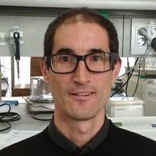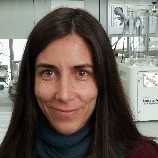Antioxidants and Skin Protection II
A special issue of Antioxidants (ISSN 2076-3921). This special issue belongs to the section "Extraction and Industrial Applications of Antioxidants".
Deadline for manuscript submissions: closed (30 April 2021) | Viewed by 92117
Special Issue Editors
Interests: natural compounds; polyphenols; marine compounds; cancer; antimicrobial; skin; cosmetics
Special Issues, Collections and Topics in MDPI journals
Interests: natural compounds; polyphenols; metabolic disorders; obesity; cancer; antimicrobial; skin; cosmetics
Special Issues, Collections and Topics in MDPI journals
Interests: metabolic disorders; cancer; inflammation; oxidative stress; natural compounds
Special Issues, Collections and Topics in MDPI journals
Special Issue Information
Currently, society has an increasing interest in skin care products based on natural products and/or extracts. Natural products have several advantages over synthetic compounds that make them more attractive to the cosmetics and pharmaceutical industries, as society assumes that synthetic compounds can have harmful effects. In fact, natural products have a long history of use for skin benefits and have been used since ancient times.
After the first volume of the Special Issue about “Antioxidants and Skin Protection”, the aim of this new volume is to deepen in the use of natural compounds to treat or prevent skin alterations, including aging.
Manuscript related to the development of cosmetics, cosmeceuticals, or nutraceuticals are also within the scope of this Special Issue when they include natural compounds in their formula.
Studies using whole natural extracts or complex mixtures are also welcome if they include a clear characterization of their components using analytical techniques.
As Guest Editors of this Special Issue, we cordially invite researchers from all around the world to contribute to this Special Issue by submitting original research articles and review papers according to their expertise.
Dr. Enrique Barrajon
Prof. Dr. Vicente Micol
Prof. María Herranz-López
Guest Editors
Manuscript Submission Information
Manuscripts should be submitted online at www.mdpi.com by registering and logging in to this website. Once you are registered, click here to go to the submission form. Manuscripts can be submitted until the deadline. All submissions that pass pre-check are peer-reviewed. Accepted papers will be published continuously in the journal (as soon as accepted) and will be listed together on the special issue website. Research articles, review articles as well as short communications are invited. For planned papers, a title and short abstract (about 100 words) can be sent to the Editorial Office for announcement on this website.
Submitted manuscripts should not have been published previously, nor be under consideration for publication elsewhere (except conference proceedings papers). All manuscripts are thoroughly refereed through a single-blind peer-review process. A guide for authors and other relevant information for submission of manuscripts is available on the Instructions for Authors page. Antioxidants is an international peer-reviewed open access monthly journal published by MDPI.
Please visit the Instructions for Authors page before submitting a manuscript. The Article Processing Charge (APC) for publication in this open access journal is 2900 CHF (Swiss Francs). Submitted papers should be well formatted and use good English. Authors may use MDPI's English editing service prior to publication or during author revisions.
Keywords
- Antioxidants
- Polyphenolic extracts
- Natural extracts
- Natural compounds
- Inflammation
- Skin aging
- Photodamage
- Photoaging
- Cosmetics
- Topical formulation
- Oral administration
- Nutraceuticals
Benefits of Publishing in a Special Issue
- Ease of navigation: Grouping papers by topic helps scholars navigate broad scope journals more efficiently.
- Greater discoverability: Special Issues support the reach and impact of scientific research. Articles in Special Issues are more discoverable and cited more frequently.
- Expansion of research network: Special Issues facilitate connections among authors, fostering scientific collaborations.
- External promotion: Articles in Special Issues are often promoted through the journal's social media, increasing their visibility.
- e-Book format: Special Issues with more than 10 articles can be published as dedicated e-books, ensuring wide and rapid dissemination.
Further information on MDPI's Special Issue policies can be found here.
Related Special Issues
- Antioxidants and Skin Protection in Antioxidants (14 articles)
- Natural Phenolic Compounds for Health, Food and Cosmetic Applications in Antioxidants (16 articles)
- Antioxidants in Cosmetics in Antioxidants (6 articles)








